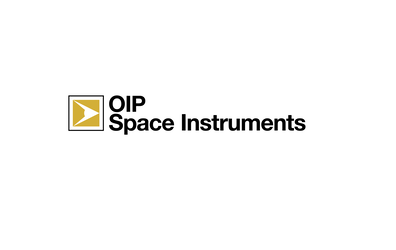The instrument
The Altius instrument is integrated on top of the Proba P-200 satellite platform. The instrument comprises an optical bench, which contains all of the optical elements, and three separate channel control units placed next to the bench, which contain most of the instrument electronics and control system.


Access the video
The instrument integrates three independent hyperspectral channels to observe the limb in the ultraviolet (250–355 nm), the visible (440–675 nm) and the near-infrared (600–1020 nm) spectral range. Each channel is based on a reflective optical design and contains the following main optical elements:
- A front baffle to protect the instrument from out of field stray light
- A front periscope mirror that allows fine co-alignment of the different instrument lines of sites
- A front end optics module that collects the light and passes it to the spectral filter
- A spectral filter (acousto-optic tuneable filter in the visible and near-infrared and Fabry Perot in the ultraviolet) that allows the required wavelength band to be selected
- A back end optics module that forms an image of the selected spectral band in the observed scene onto the detector
- The focal plane assembly consisting of the detector and its proximity electronics
The instrument makes use of tuneable filters (as noted above), in particular:
- Acousto-optic tuneable filters for the visible and infrared channels
- Fabry-Perot interferometers for the ultraviolet channel


Access the video
Acousto-optic tuneable filters are small birefringent crystals (typically a few cubic centimetres big) that serve as interaction medium between the incoming light and an acoustic wave propagating in the crystal. By carefully selecting the acoustic wave frequency, the acousto-optic interaction induces a Bragg diffraction regime which deflects light with a specific wavelength away from its incident direction. The diverted beam can then be collected by an off-axis optical detector.
In the ultraviolet region, the filter element consists of a cascade of Fabry-Perot interferometers, as the acousto-optic tuneable filter technology has not proven to be fully compatible with the Altius environment in this particular range of wavelengths.
The use of tuneable active spectral filters allows the Atius Instrument to perform observations with a spectral resolution between 2.5 nm and 10 nm in an extremely versatile operational concept.
The use of the acousto-optic tuneable filter and Fabry Perot technologies constitutes a novelty in limb-sounding missions, with development and performance having been proven by an extensive instrument pre-development phase.
The Altius instrument is designed to operate continuously over one orbit in various modes. It will perform acquisitions in a broad wavelength range coping with large differences in light intensity across the various observed scenes.
Play the Altius game
A star emits light in the form of photons. Photons visible to the human eye cover a wavelength range from 380 to 700 nm. Our eye perceives different wavelengths as colours: 450 nm is blue, and 700 nm is red, for example.
During a stellar occultation, Altius observes a star rising or setting through Earth’s atmosphere similar to a normal sunset, whilst measuring its photons at different altitudes above the horizon. Just as the Sun appears redder during sunset the star will also appear to change colour.

Earth’s atmosphere contains particles and gases such as ozone and oxygen that cause the apparent change in colour by absorbing or scattering photons. Ozone for example strongly absorbs photons in the UV below 350 nm.
Altius can detect the presence and location of ozone in the atmosphere by measuring photons at wavelengths with different ozone sensitivities and comparing them over altitudes from 0 to 100km above the horizon.
Play the Altius game to find out which wavelengths are sensitive to ozone and at which altitudes ozone is most strongly concentrated in Earth’s atmosphere.
Good luck!
Back to Altius homepage |









